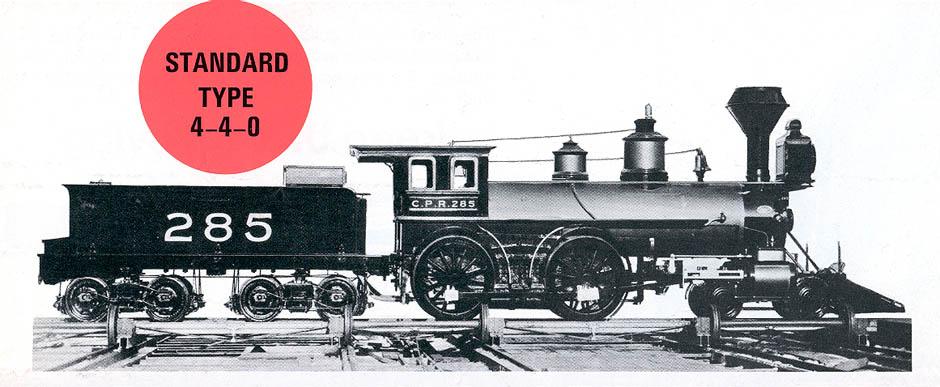 |
|
Collectors' Item 3 by Omer Lavallee When we speak of Canadian railway equipment builders, the name of many steam locomotive building establishments come easily to mind; the two major companies at Montreal and Kingston were supplemented by a host of smaller firms whose contribution was small but significant, such as D.C. Gunn in Hamilton and Fleming & Humbert in Saint John, N.B. A goodly proportion of Canadian steam power was constructed by the larger railways in their own shops, however, and Canadian Pacific was far from being an exception. Its locomotive building era lasted for It was at the DeLorimier works late in 1883 that the first CPR built steam locomotive, (1st) No. 285, was rolled out proudly onto the transfer table to have its portrait taken; this is the picture shown in the illustration above. Its designer, Francis R.F. Brown, proved by its clean and tidy lines, yet utilitarian design, that he was a cut |
above his contemporaries. A native Scot
of wide experience, he served his apprenticeship in the United Kingdom, before going out to
India to work for the Great Indian Peninsula Railway. While still a comparatively young
man, he came out to Canada and joined the Grand Trunk Railway, eventually becoming Works
Manager at Point St. Charles Shops. It was from this position, in 1883, that he was lured
by W.C. Van Horne to become CPR's Mechanical Superintendent, with authority over all motive
power and rolling stock.
No. 285 served Canadian Pacific faithfully through two renumberings for |
|